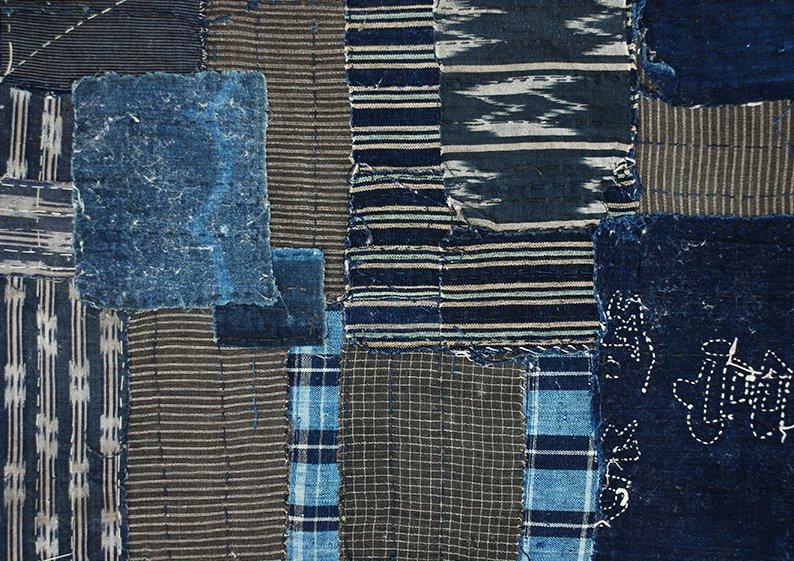

If you can wrap three beans in a piece of cloth, then it is big enough to keep.'
Boro from the Japanese term boroboro, meaning something tattered or repaired are mended or patched textiles from Japan. Born out of necessity they were stitched together by rural peasant women who would mend, conceal and patch the holes and tears in their family's work clothes and frayed futon covers.
Boro began in the northernmost tip of Japan. This was in part due to the extreme poverty of its people but also because of the scarcity of cotton the harsh northern climate making it impossible for cotton to grow. Instead the region was reliant on the trade of used cotton (new cotton being far too costly). Boats from the south of Osaka would arrive in the northern ports laden with discarded cotton from the central coastal cities. Peasant women would then trade for these salvaged pieces of cotton with whatever they had from fish through to seaweed.
The boro pieces that the local peasant women created were the result of happenstance never planned. Pieces of kasuri might be layered over darkly striped fabrics; deep indigo stitched over scraps of the palest, faded blue. And over the years each generation would alter the garments, giving them an entirely new life by patching together further fabrics, or by using sashiko stitching (a decorative reinforcement stitch, literally translated as little stabs').
This unselfconscious process yielded articles with a soulful beauty, with a history sewn into their very seams making them much more than the utilitarian cloth they were intended to be.
Images courtesy of Catherine Legrand. Author ofIndigo: The Colour That Changed The World, published by Thames and Hudson,www.in-di-go.fr.
Words by Emily Mears
Shop our true indigo and Japanese indigo pieceshere.
Add a comment